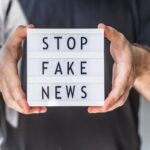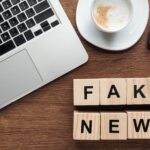Let’s be real: misinformation has become a serious issue in today’s world, and its effects on society are profound. Social media platforms, where information spreads at lightning speed, have amplified the reach and impact of misinformation. In fact, misinformation doesn’t just confuse people; it can shape their beliefs, decisions, and, ultimately, their actions. This topic goes beyond fake news and forces us to examine how misinformation, fueled by social media, influences public perception and challenges the principles of free speech and censorship.
Misinformation vs. Disinformation: Understanding the Difference
Before diving into the dangers of misinformation, it’s important to understand the distinction between misinformation and disinformation. Misinformation refers to the spread of false information without malicious intent. It’s often accidental, like someone sharing an outdated or incorrect article without realizing it. Disinformation, on the other hand, is much more calculated and malicious. It’s the deliberate spread of false information with the intent to deceive or manipulate. While misinformation can cause confusion, disinformation aims to mislead and create long-term harm. Both forms thrive on social media, but disinformation, in particular, is often used to sway political opinions, mislead voters, or disrupt societal harmony.
The digital age has made it easier for misinformation and disinformation to blend together. As a result, many people are unable to distinguish between them. This lack of clarity is what makes misinformation so dangerous—falsehoods can circulate without detection, leading to widespread confusion.
The Role of Social Media in Spreading Misinformation
Social media platforms have become powerful tools for sharing information. Unfortunately, they are also prime breeding grounds for misinformation. These platforms are designed to prioritize engagement, so content that provokes strong emotional reactions tends to spread more quickly. Whether it’s anger, fear, or excitement, social media algorithms favor posts that trigger these emotions, regardless of their accuracy. As a result, misinformation often spreads faster than the truth.
Think about how often you’ve scrolled through your feed and seen sensational headlines. Without checking the source, it’s easy to share or comment on something that may not be true. This is how misinformation can spread like wildfire, creating echo chambers where users are only exposed to content that reinforces their beliefs. In these environments, it festers, grows, and takes root in people’s minds.
Moreover, social media platforms are often slow to respond when it goes viral. By the time a post is flagged or taken down, the damage has often already been done. People have already formed opinions based on the false information they consumed. The consequences of this are particularly harmful when it comes to issues like public health, politics, or even natural disasters.
How Misinformation Shapes Public Perception?
Misinformation’s ability to shape public perception cannot be understated. When false information spreads unchecked, it alters how people view the world around them. For instance, during the COVID-19 pandemic, misinformation about vaccines and treatments spread widely. Many individuals based their health decisions on falsehoods, putting themselves and others at risk.
This same phenomenon occurs in politics. Misinformation and disinformation are frequently used to sway public opinion. Fake news articles, doctored videos, and misleading statistics can manipulate voters’ perceptions of candidates or policies. These distortions can affect elections, policy decisions, and public trust in institutions.
Worse yet, when people are exposed to the same false information repeatedly, they’re more likely to believe it. This is known as the “illusory truth effect.” Even when presented with corrections later, It often leaves a lasting impression. It’s a dangerous cycle that skews reality for those who consume it.
The Real-World Impact of Misinformation
The dangers of misinformation extend beyond social media and public perception—they have real-world consequences. Misinformation about health, for instance, can lead to life-threatening decisions. People may refuse vaccines, rely on unproven treatments, or ignore safety guidelines, all because they encountered false information online. This was evident during the COVID-19 pandemic, but it’s not the only example. Anti-vaccine movements have existed for years, largely fueled by misinformation and disinformation.
In politics, the consequences can be just as severe. It can influence elections, shift public opinion on critical policies, and erode trust in democratic institutions. In extreme cases, disinformation campaigns can destabilize entire governments. The 2016 U.S. Presidential election, for example, saw Russian operatives using disinformation to influence voters through social media platforms. This wasn’t an isolated incident—it’s a global problem.
The stakes are high, and the spread also endangers public safety, political stability, and societal trust. It leads to polarization, where people are divided by the false information they believe, making it difficult to find common ground on important issues.
Censorship vs. Free Speech: Navigating the Dilemma
When we talk about combating misinformation, we can’t avoid the debate surrounding censorship and free speech. Social media platforms are in a tough position. On one hand, they are responsible for curbing the spread of harmful misinformation. On the other hand, restricting content too aggressively can lead to censorship, which violates the principle of free speech.
Free speech is a cornerstone of democratic societies, and it’s important that we protect it. However, misinformation poses a direct threat to public well-being and democratic integrity. Striking the right balance between preventing harm and protecting free speech is a delicate, ongoing challenge.
When platforms remove or label content as misinformation, they face accusations of censorship. Critics argue that these actions limit the free exchange of ideas, particularly when controversial topics are involved. However, unchecked information can have disastrous effects. It’s a tightrope walk that requires thoughtful solutions, and there are no easy answers.
The Ethical Responsibility of Social Media Platforms
Given the dangers of misinformation, it’s clear that social media platforms have a role to play in addressing the issue. But how much responsibility should they bear? Should they actively moderate content to prevent the spread of false information, or should they allow free speech to reign?
Platforms like Facebook, Twitter, and YouTube have already implemented some measures to combat it. Fact-checking labels, content removal, and algorithm tweaks are all tools used to limit the reach of misinformation. However, these actions are often criticized for either being too lenient or too strict.
The ethical responsibility of these platforms is a complex issue. On one hand, they should ensure that their platforms aren’t used to spread harmful misinformation. On the other hand, over-moderation can suppress legitimate voices and create a slippery slope toward censorship.
Ultimately, social media platforms must find a way to protect free speech while preventing the spread of dangerous misinformation. Transparency in their decision-making processes and collaboration with external fact-checkers could be part of the solution.
Solutions for Combating Misinformation
So, how do we combat the dangers of misinformation effectively? While there’s no one-size-fits-all solution, several strategies can help.
First, social media platforms must continue to refine their algorithms and moderation policies. By prioritizing accurate, trustworthy content over sensationalist misinformation, platforms can reduce the reach of false information without stifling free speech.
Second, media literacy must improve. People need to be more critical of the information they encounter online. Schools, governments, and organizations can play a role in educating the public about how to identify misinformation. The more discerning users become, the less likely it will spread.
Lastly, collaboration between governments, tech companies, and civil society is essential. Misinformation is a global issue that transcends borders, and only by working together can we develop effective, sustainable solutions.
Moving Forward: The Future of Misinformation
As misinformation continues to evolve, so must our approaches to combating it. Social media platforms will need to stay ahead of disinformation campaigns and ensure their algorithms aren’t amplifying false information. At the same time, they must safeguard free speech and avoid censorship that undermines the open exchange of ideas.
While the battle against it is far from over, progress is possible. By holding platforms accountable, improving media literacy, and fostering collaboration, we can mitigate the dangers that misinformation poses to society. However, we must remain vigilant, as the fight against misinformation is ongoing.
In the end, it’s up to all of us to be more discerning in the content we consume and share. Only by questioning what we see online and seeking out reliable sources can we protect ourselves from the dangers of misinformation. After all, the truth is always worth the extra effort.
Click here to read our latest article How Digital Consent Shapes Ethical Social Media Practices?





